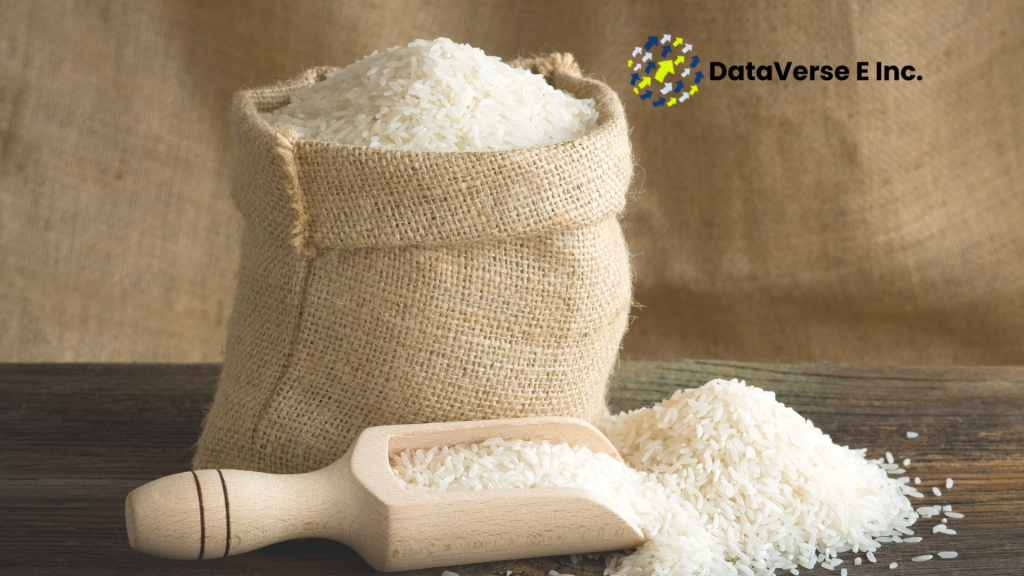India is one of the top countries in the world when it comes to producing vegetables. In addition to this, there is a growing demand for Indian vegetables all over the world. Supermarkets in different countries now sell Indian vegetables like green chilies, okra, dried onions, and garlic.
People around the world need vegetables in their diets because they have required vitamins, minerals, and fiber that help keep us healthy and protect us from getting sick. The natural health benefits of Indian vegetables make them even more popular in other countries.
Starting a business of vegetable export from India can be a great idea. It allows businesses to meet the needs of other countries while making a good profit. The government also offers support, and the business has potential for long-term growth. However, it takes time to succeed in this business. To run a successful vegetable export company, you need to plan carefully and understand international trading, quality checks, and marketing strategies.
In this guide, we’ll walk you through the steps to start a successful vegetable export business, from picking the right vegetables to making sure they meet international standards. Let’s get started!
Growing Global Demand for Indian Vegetables
India is known as the second-largest producer of vegetables in the world, making up nearly 15% of the global supply, just behind China. The country’s vegetable exports are growing fast.
In 2023, India’s vegetable export market reached $2.1 billion, which is 20% higher than in 2022. This growth is mostly due to strong demand from five main countries: the UAE, USA, Malaysia, Bangladesh, and Sri Lanka. The top vegetables exported from India include onions, okra, tomatoes, garlic, and green chilies. There has also been a big increase in demand for dried vegetables, especially onions and garlic.
The growth of India’s vegetable exports is driven by several key factors:
- Top Export Markets: India exports vegetables to countries like Bangladesh, the United Arab Emirates, Malaysia, the United States, and Sri Lanka.
- Leading Exported Vegetables: The most exported vegetable from India is onions, followed by other vegetables like tomatoes, cabbage, potatoes, beans, garlic, spinach, cauliflower, okra, and cucumbers.
- Export Volume: In 2023, India exported 689,000 metric tons of vegetables to 9,461 buyers around the world.
India’s vegetables are popular with foreign buyers because they are flavorful, affordable, and available year-round from different regions in the country.
Steps to Start a Vegetable Export Business from India
Starting a vegetable export business from India presents lucrative opportunities because India possesses plentiful agricultural resources, and its vegetables attract rising international market demand. Success in the vegetable export from India demands a methodical structure together with proper planning of all business aspects. A detailed guide provides instructions for starting your vegetable export business according to the following steps:
1) Research International Markets and Demand
The key factor to success in exporting requires comprehending market dynamics in advance of entering the business. Your first step requires analyzing worldwide market demand patterns alongside popular vegetables. The United Arab Emirates and Saudi Arabia together with the United Kingdom and the United States rank among the primary markets for Indian vegetable exports.
To make informed decisions, explore:
- Import statistics: Examine the statistical data regarding economic trade numbers for potential vegetable purchase nations.
- Market trends: Identify the supply patterns of sought-after vegetables in the market. The export market for India includes the regular shipments of potatoes along with tomatoes and onions.
- Use Verified Trade Data to Identify Buyers: To find reliable foreign buyers and market trends, access verified import-export data providers. Your research will show you locations where you should focus your vegetable export sales to actual customers and select which nations represent your main export opportunities.
2) Register Your Business to Obtain Licenses
Before starting an export business, you need to set up a legal framework. This helps build trust with international buyers and ensures your business is following the rules.
- IEC (Import Export Code): This is required for any import or export activity in India.
- GST Registration: This is necessary for tax purposes.
- FSSAI (Food Safety and Standards Authority of India): This ensures that your food products meet safety standards.
- APEDA (Agricultural and Processed Food Products Export Development Authority): This registration is needed for exporting agricultural products.
3) Choose Your Product Type: Fresh or Dehydrated Vegetables
When deciding to export vegetables, you need to choose whether you want to export fresh or dehydrated vegetables based on what the market needs.
- Fresh Vegetables: These need to be handled carefully, stored in cold conditions, and transported quickly to keep them fresh.
- Dehydrated Vegetables: These last longer, making them a good choice for exporting to far-away markets. They are easier to store, less likely to spoil, and reduce transportation problems.
Dehydrated vegetables are becoming more popular with international buyers, so it’s important to think about this option for higher profits.
4) Secure a Reliable Supply of Vegetables
Once you’ve chosen which vegetables to export, the next step is to find reliable suppliers.
Make direct agreements with local farmers who produce high-quality vegetables. You can also consider contract farming, which will ensure a steady supply of fresh produce.
For long-term success, you might want to invest in your own farm. This will give you better control over the quantity and quality of the vegetables you export.
Checklist:
Make sure the vegetables meet quality standards.
Work with trusted suppliers and farmers.
Set up quality checks for sorting and grading.
5) Set Up Infrastructure for Export
Your vegetable export business needs the right infrastructure to be successful. You should invest in cold storage units to maintain the quality and extend the shelf life of fresh vegetables. It’s also important to establish dehydration units that preserve the nutritional content of dehydrated produce. The packaging must be durable and meet international standards to protect the vegetables from contamination and spoilage during their journey to the market. With the proper infrastructure in place, your products will be ready for export and meet international market requirements effectively.
6) Understand Export Documentation with Compliance
Understanding and following all the required documentation and compliance rules is one of the hardest parts of the vegetable export business. Your export journey needs several important documents, and making sure everything is done correctly is a must to avoid delays and problems.
7) Plan Efficient Logistics and Shipping
To succeed in global markets, you must work with the right logistics partners who can deliver your vegetables on time and in good condition. You’ll need to choose between faster but more expensive air freight or slower and cheaper sea freight. For fresh vegetables, cold chain logistics is a must because it helps keep them fresh during transport. Freight companies that have experience in food exports are better at handling the shipping process, so it’s smart to work with skilled experts to avoid delays and ensure smooth delivery.
Focus on Dehydrated Vegetables Export
Dehydrated or dried vegetables are growing in popularity because they last longer, weigh less, and are easier to store. In 2022, India exported 150,000 metric tons of dehydrated vegetables, which brought in strong profits for the agricultural sector.
These vegetables are easier to transport and are used by industries like snack food companies, restaurant chains, and instant meal producers. Dehydrated vegetables such as onions, tomatoes, and peas are especially in demand in the USA, Europe, and the Middle East.
Profit Margins in Vegetable Export Business
India’s vegetable export market is growing fast, reaching $2.1 billion in revenue in 2023, which is a 20% increase from the previous year. This strong growth is driven by several factors such as competitive pricing, a wide variety of products, and rising demand in global markets.
Profit Margin Insights:
- Fresh Vegetables: Vegetable exporters from India usually earn profit margins between 15% to 30%. However, the exact profit depends on the type of vegetable, the destination market, and how well the operations are managed.
- Dehydrated Vegetables: Dehydrated vegetable exports are even more profitable, with margins ranging from 25% to 40%. This is because they have a longer shelf life and lower shipping costs. For example, exporting onion powder falls within this profitable range and brings in strong returns.
The global market for dehydrated vegetables is expected to grow by 8.1% each year until 2035. By then, it’s projected to reach a value of $192.1 billion. This creates a big opportunity for Indian exporters to expand and earn more.
Top 10 Fresh Vegetable Exporters in India
Many Indian companies are known for exporting fresh vegetables to global markets. They stand out because of their strong business practices and the high quality of the produce they supply.
1. Geewin Exim Pvt Ltd
2. Mukund Exports Pvt Ltd
3. Yuvaraju Agro Impex
4. Samagri
5. Essar Exports
6. Jay Agro Export
7. Dhanlaxmi International
8. Adrianna Springs Impex
9. Pisum Foods
10. VNS Food LLP
Top Dehydrated Vegetable Exporters in India
Dried vegetable exports are rising quickly because these products are easier to store, lighter to ship, and last much longer. Countries like the USA, UK, Germany, UAE, Saudi Arabia, and Japan are major buyers of these products. Indian companies from agricultural hubs with strong processing setups are leading the way in exporting dried and dehydrated vegetables.
- Farmbridge Agri & Food Processing Co.
- Pisum Foods
- Garon Dehydrates Pvt. Ltd.
- Bagora Dehydrates
- Aditi Global Import Export
- Yesraj Agro Exports
- Purnima Exim
- Farm Wealth Agro Exports Pvt. Ltd.
Top 5 Vegetable Exporting Countries
| Rank | Country | Export Value (USD) |
|---|---|---|
| 1 | China | $10.55 billion |
| 2 | Netherlands | $7.26 billion |
| 3 | Mexico | $6.68 billion |
| 4 | Spain | $6.52 billion |
| 5 | Canada | $4.83 billion |
Final Checklist Before Starting Your Vegetable Export Business
Getting ready to start your vegetable export business? Here’s a quick summary to help guide you through the important steps:
1. Register your business — Obtain IEC, GST, FSSAI, and APEDA registrations.
2. Choose your vegetable category — Fresh or dehydrated.
3. Research your target market — Understand demand, competition, and trends.
4. Develop sourcing strategy — Partner with farmers or secure farm contracts.
5. Set up export-ready infrastructure — Cold storage or dehydration units.
6. Handle logistics and documentation — Ensure smooth shipping and customs compliance.
7. Market your products — Use exhibitions, B2B platforms, and digital marketing.
8. Get Verified Buyers Data — Access real-time vegetable buyers trade data to analyze buyer and seller trends and pricing.
9. Stay compliant — Follow global standards and update regularly.
10. Measure, improve, and expand — Continuously enhance your operations.
Wrapping Up
The vegetable export business from India has huge potential thanks to India’s rich and diverse farming regions. To succeed, businesses need to understand market trends, set up the right infrastructure, and choose the right products. Strong import-export data helps you track buyer activity and global trends. Dataverseeinc global trade data from over 100 countries to help you find the right buyers, follow HS code movements, and make smart decisions. Our team is here to support your journey and help take your vegetable export business to the next level.






No comment yet, add your voice below!